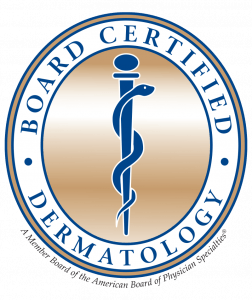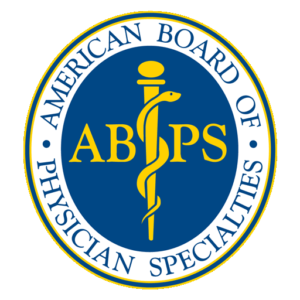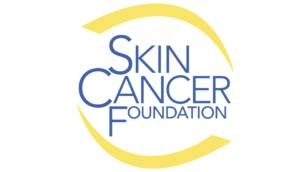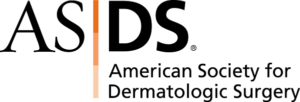
What is Molluscum Contagiosum?
Molluscum Contagiosum (MC) is a viral skin infection seen most commonly in young to school-age children. As its name suggests, the MC virus is contagious and spread primarily through direct skin to skin contact, but also by sharing towels, clothing and gym mats. The prevalence of MC seems to be on the rise. A recent meta-analysis suggests a prevalence in children between 5 to 10% with a tendency towards higher rates in 1 to 4-year-olds.¹ There is evidence for increased risk of MC infection in those who have eczema², bathing with an infected sibling, and possibly through swimming pools³, though this should not be a reason to limit swimming.
Frequently Asked Questions (FAQ)
The MC skin infection typically presents as flesh-colored to slightly pink, 1-5mm sized bumps with umbilication (i.e. central depression). Lesions can occur anywhere on the body, but most frequently occur in moist areas of friction including the armpits, groin, elbows, behind the knees, and sides of the abdomen.⁴
MC may also spread to the genital region as well as to the face and eyelids. Bumps often occur in groups, clusters or in a line (from scratching). Fortunately, the MC virus never spreads inside the body.
Typical appearance of molluscum contagiosum with umbilicated flesh colored/pink colored papules on the neck of a child.
Molluscum contagiosum papules with secondary eczema “molluscum dermatitis”
No, it is not. MC does not spread inside the body.
Molluscum contagiosum infection occurs most commonly in healthy children and having the virus does not mean there is something wrong with your child’s immune system⁵.
Most healthy people eventually develop spontaneous immunity against the virus, though it may take months to years to occur. It is impossible to predict how long it will take an individual child (or adult) to develop immunity. If your child has no symptoms, it is reasonable to wait for spontaneous clearance. Since molluscum contagiosum is a “pox” virus, there is a low risk (6-7% chance) of “pock-like” scarring when MC heals⁶.
A recently published study (Olsen JR Lancet 2015) states that:
70% of Molluscum Contagiosum lesions resolve spontaneously within 18 months
30% of cases persist beyond 18 months
13% of cases persist beyond 24 months
There is no clear-cut answer to this question. But there are certain situations in which treatment is preferred.
First off, if your child has patches of eczema or is itching, it is imperative to control the skin rash as scratching will cause further spread of the MC bumps.
Some parents choose to treat because the MC bumps are bothering the child, because of cosmetic concerns, and to prevent spread to other family members.
What treatments are available in a dermatologist's office?
Cantharadin is a chemical agent derived from a blister beetle extract. It is a preferred first line agent for the treatment of Molluscum due to its painless application and high rate of parental satisfaction (7). Cantharidin works by inducing a blister with resolution of the molluscum bump when the blister heals. The process involves in-office application of a tiny amount of beetle juice (using a wooden toothpick) to each individual bump. Care is taken to avoid application to normal surrounding skin. The beetle juice is dried using a fan and postoperative instructions are provided. Parents must observe the sites for the next few hours and thoroughly wash off the beetle juice once blistering develops (usually no more than 4 hours after application). Side effects include blistering (expected), temporary burning and discomfort (approximate 10% incidence), as well as temporary discoloration, especially in darker pigmented patients. Treatment with cantharidin for MC lesions on the face, diaper area and certain folds of skin are not recommended.
Immunotherapy is a way to train the body’s immune system to fight the molluscum contagiosum virus. In most people, it takes months to years to develop an immune response. With immunotherapy, this process is accelerated. A small amount of an antigen (such as Candida antigen) is injected into the skin where the MC resides. This triggers the immune system to attack the MC virus promoting rapid immunity.
The unique feature about this treatment however is that only a small handful of the MC bumps are treated. Once the immune system starts to recognize those few MC bumps, it also starts to fight the untreated lesions as well. Advantages to this form of treatment include: lack of scarring, lack of discoloration, probable reduction in recurrence, and lack of need to treat every single lesion.
In a small study of 29 patients, 55% of children had complete clearance after three sessions of Candida antigen injection, four weeks apart⁹. Dr. Singer typically uses a tiny 31-gauge needle and pretreats with topical lidocaine. Most children tolerate this treatment very well.
When the molluscum lesions turn red, it means the injections are working and the immune system is attacking the virus!
Trichloroacetic acid (TCA) is a safe and effective chemical agent that denatures protein and, at low concentrations, causes injury localized to the epidermis. TCA is not absorbed systemically. It has utility for treatment of molluscum contagiosum lesions on the face. Application produces a mild stinging only and is generally well tolerated by children. Scarring and permanent discoloration are extraordinarily rare⁴.
At-Home Treatments
A variety of small studies have examined several treatments applied in the home by the patient or parent. These include the use of salicylic acid, lactic acid, hydrogen peroxide, retinoids (e.g. tretinoin), Imiquimod, etc. Some of the studies have shown good efficacy, however virtually all of these are limited by local reactions including itching, irritation, burning, redness, scabbing and crusting.
Recently, A small Chinese prospective study demonstrated about a 50 percent response rate of molluscum after exposure to infrared-generated heat (44 degrees Celsius) for 30 minutes once weekly, for a maximum of 12 weeks. Use of a heating pad may generate similar conditions (AAD meeting news, August 3, 2017).
Society of Pediatric Dermatology video on Molluscum Contagiosum and Warts:
Sources
- Fam Pract. 2014 Apr;31(2):130-6. Epidemiology of molluscum contagiosum in children: a systematic review. Olsen JR1, Gallacher J, Piguet V, Francis NA.
- J Am Acad Dermatol. 2006 Jan;54(1):47-54. The epidemiology of molluscum contagiosum in children. Dohil MA1, Lin P, Lee J, Lucky AW, Paller AS, Eichenfield LF.
- Pediatr Dermatol. 2005 Jul-Aug;22(4):287-94. Epidemiology and impact of childhood molluscum contagiosum: a case series and critical review of the literature. She Braue A1, Ross G, Varigos G, Kelly H.
- Pediatr Dermatol. 2009 Jul-Aug;26(4):425-6. Treatment of facial molluscum contagiosum with trichloroacetic acid. Pediatr Dermatol. 2009 Jul-Aug;26(4):425-6. Bard S, Shiman MI, Bellman B, Connelly EA.
- Society of pediatric dermatology molluscum contagiosum parent handout.
- Int J Dermatol. 2006 Feb;45(2):93-9. Childhood molluscum contagiosum. Brown J, Janniger CK, Schwartz RA, Silverberg NB.
- J Am Acad Dermatol. 2000 Sep;43(3):503-7. Childhood molluscum contagiosum: experience with cantharidin therapy in 300 patients. Silverberg NB, Sidbury R, Mancini AJ.
- Pediatr Dermatol. 2007 Mar-Apr;24(2):192-4. Modified curettage technique for molluscum contagiosum. Martín-García RF, García ME, Rosado A.
- Pediatr Dermatol. 2011 May-Jun;28 Intralesional immunotherapy with Candida antigen for the treatment of molluscum contagiosum in children. Enns LL1, Evans MS.










